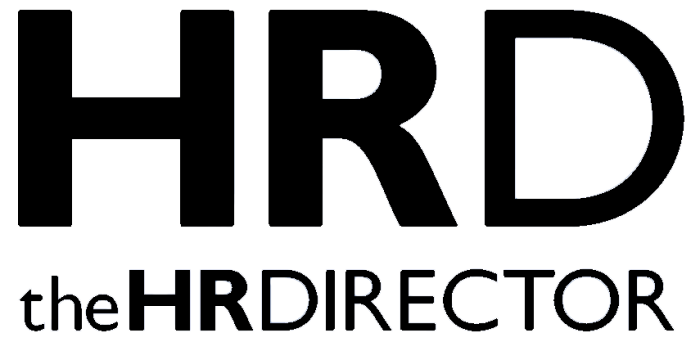After five years of remote working and witnessing one of the most significant transformations in the workplace since the Industrial Revolution, it’s evident that the world of work has transformed. Employees have tasted flexibility by working remotely and are reluctant to give it up and return to the office. However, many companies are pushing return-to-the-office (RTO) mandates to employees following the likes of JP Morgan, Amazon and others. After 185 years of rigid working patterns and behaviours, we have finally broken the mould, yet we are taking steps to regress rather than progress.
If a job can be performed remotely then why is location so relevant if they get the required results?
AI: The Real Disruptor
While the debate over remote work is important, it’s small in comparison to the disruption AI is about to deliver. The introduction of AI to the workplace will redefine how we work forever. As businesses focus on remote or hybrid models, it’s crucial that they also focus on embracing the future of work, led by AI.
Businesses must adapt not only to employee location preferences but also to the broader changes brought on by AI. The challenge now is to integrate AI in a way that enhances productivity while still empowering employees to use their unique human qualities, creativity, empathy, and decision-making. AI will complement human workers but also fundamentally change many aspects of work. Ensuring that employees don’t feel threatened by AI but instead are encouraged to harness it to elevate their roles will be a key challenge in the coming years.
A Time for Adaptation, Not Regression
Many of the decisions to mandate RTO seem to be driven by generational perspectives, primarily Baby Boomers and Gen X. Some of these leaders, who may have more traditional views, resist the changes brought on by remote work. They often struggle to accept that the workplace has evolved and employees’ needs have changed. The presenteeism that values physical presence over results, is becoming increasingly outdated.
We must recognise that this evolution is not a fleeting trend, but a long-term shift. Businesses that continue to resist these changes risk falling behind as they maintain outdated work practices. The workplace is no longer bound by location. Companies that understand this will lead the way in attracting and retaining top talent.
A New World of Work
We’re living in a new world, and businesses need to adapt, not revert to old methods. The challenges of remote working, when compared to the larger disruptive force of AI, may seem small in hindsight. If businesses struggle with where their employees work, how will they cope with the far greater challenge of integrating AI into their operations?
Instead of focusing on rigid office mandates, businesses should develop flexible, future-oriented policies. Companies need to listen to employees’ desires for flexibility while balancing their operational needs. Those that fail to adapt will find themselves struggling to recruit and retain top talent.
The Role of Generation Z and Gen Alpha
The rise of remote and hybrid work is not solely a product of COVID-19, it’s also a reflection of younger generations, such as Gen Z and the incoming Gen Alpha, who have grown up with this technology. These generations place a higher value on flexibility than on traditional in-office hours. For them, working remotely isn’t just a preference; it’s a necessity for balancing their personal lives with their professional aspirations.
This shift challenges older managers who may not fully understand or embrace these values. A multi-generational workforce requires managers to rethink their approach to leadership and employee engagement. Businesses that want to succeed will need to build strategies that accommodate these varying needs, promoting a culture of flexibility while still driving results.
A Flatter Structure for the Modern Workforce
Today’s workplace is increasingly flat, and hierarchy is no longer as rigid as it once was. Younger management teams in startups embrace this flatter structure, preferring more collaboration and a sense of shared purpose among employees. This shift, however, can be threatening to older generations of leaders, especially when working remotely.
The balance of power has shifted from employers to employees, particularly when it comes to flexibility. ‘Big Brother’ management tactics that try to control where and how employees work will only lead to disengagement and dissatisfaction. Companies must trust their employees and offer them the flexibility they need to perform their best work. Fostering a culture of mutual respect and empathy will go a long way in maintaining loyalty and motivation.
The Path to Successful Remote and Hybrid Work
After five years of remote and hybrid work, it’s concerning that many businesses are still struggling to manage their teams effectively. Instead of resorting to mandates businesses should focus on creating strategies, processes, and policies that work for both employees and the company.
Businesses should test new approaches and ask employees for feedback on what works and what doesn’t. Employee engagement and trust are key to success and that means listening to their concerns and working together to find solutions. By simplifying remote work policies and making them easy to understand and implement, companies will build a more engaged and productive workforce.
Creativity and Collaboration: Staying Connected
One of the biggest concerns about remote work is isolation. However, remote workers can remain engaged and creative with the right tools and approaches. Technology can enable collaboration but it’s essential that businesses actively keep remote employees connected. This might mean regular virtual team-building activities, providing the right technology for collaboration, and offering flexibility so employees can work in the ways that best suit them.
Businesses should recognise that one-size-fits-all policies don’t work. Some employees may thrive in a full-time remote work environment, while others may prefer a hybrid model, and some may even be more productive in the office full-time. Offering employees choice and flexibility will help them stay engaged, creative, and collaborative.
Flexibility is Key
Despite various attempts to lure employees back to the office with perks like free lunches, new office furniture, and extra holidays, many employees still value flexibility above all else. Offering flexibility in where and when people work is one of the most valuable things a company can provide and it can’t easily be bought with financial incentives.
Businesses that continue to restrict employee choice on location will also restrict their talent pool. Flexibility gives companies access to a broader range of candidates, opening new possibilities for recruitment and growth.
Rewriting the Rules
The decision of whether to allow employees to work from home is a significant shift but it’s just the beginning. The real challenge comes when businesses must integrate AI into their workplaces. This will require a complete rewrite of many traditional management strategies and policies.
Rather than simply following the herd, businesses should devise remote and hybrid work strategies that reflect the needs of their employees. Companies that do this successfully will set themselves up for the future, embracing both flexibility and AI’s transformative potential.
Walk, Don’t Run
The modern workplace is continuously evolving and businesses must be patient, test new strategies, and adapt them based on feedback. This isn’t about power struggles, it’s about empowering employees to do their best work and ensuring they feel valued, trusted, and respected.
Rather than rushing into rigid return-to-office mandates, companies should take a methodical approach to creating work policies that support both their employees and the business. Be open to change and understand that the workplace of tomorrow will look very different from what we know today.
To succeed in the future, businesses must adapt to these changes by embracing flexibility, focusing on employee engagement, and integrating new technologies like AI. By doing so, they will build loyalty and increase productivity resulting in a more resilient, innovative workforce.









